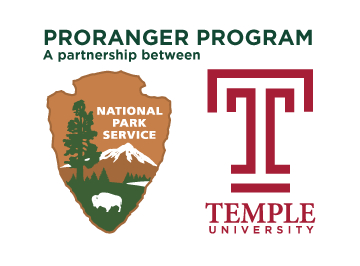6 Days & 3,000 Miles...
Hello ProRangers and Park People! Since my last post, I have traveled through nine states covering nearly 3,000 miles on my journey to Yosemite National Park in California. My journey mainly followed the Historic Route 66 which runs from Illinois to California. Along the way, I stopped at El Malpais National Monument in New Mexico, Petrified Forest National Park in Arizona and Sequoia National Park in California. Since the following blogs will mostly cover my experience in Yosemite, I want to start by sharing my park visits with all of you.
El Malpais National Monument-New Mexico
 |
| El Maplais National Monument Visitor Center |
While stopping at El Malpais National Monument was not a planned part of my trip, I couldn't pass up the opportunity while driving through New Mexico. Established in 1987, El Malpais National Monument and Conservation Area protect a combined area of 375,000 + acres. The volcanic landscape "The Badlands" is home to breathtaking scenery and rich archaeological sites that provide a window into the past of those who have inhabited the land for over 10,000 years. The landscape is dominated by vast lava flows that form cinder cones and lava tube caves. Although the weather did not permit any hiking, I was able to view the lava flows from an observation point and visit La Ventana Natural Arch, New Mexico's second-largest natural arch.
 |
| Vast Lava Flows of the "Bad Lands" |
 |
| La Ventana Natural Arch |
Petrified Forest National Park- Arizona
 |
| Petrified Forest National Park |
Petrified Forest National Park, established in 1962, helps preserve fossilized records from the late Triassic Period while telling the story of the prehistoric people who once lived there. The Park's 28 mile long road is the only section of Route 66 running through a National Park. The winding road brings visitors to iconic destinations, such as the Painted Desert Inn National Historic Landmark which served as a rest stop for early travelers. The Inn's lodge and guest cabins, originally built in the mid 1920's, were redesigned in the Pueblo style by architect Lyle Bennett and construction was carried out by members of the Civilian Conservation Corps. (CCC) between 1937-1940. In 1987, the Inn was declared a National Historic Landmark. Today, visitors can walk through the historic structure which takes them back to an earlier time.
 |
| The "Painted Desert Inn" |
 |
| View from the Park's Main Road |
While the Painted Desert Inn is one of the most iconic aspects of the park, remnants of prehistoric forests preserved in time as petrified wood drew visitors long before the Inn was established. By the 1800's, interest in petrified wood began threatening the landscape as travelers and visitors began removing the wood for use in decorative furniture, jewelry, and other items. Seeing the historic and cultural value of the landscape, President Theodore Roosevelt signed legislation establishing the Petrified Forest as a National Monument in 1906. With designation as a National Monument, the vast archaeological and historic resources were protected. Once the resource was protected, the need to interpret and share the significance of the area became a priority. Starting in 1934, thousands of men in the CCC initiated construction of roads, trails, bridges and museums which are still used to this day. In 1962, the National Monument was re-designated as a National Park.
 |
| Petrified Wood along the Long Logs Trail |
 |
| The "Painted Desert" |
Sequoia National Park-California
 |
| Entrance to Sequoia National Park |
The last stop on my journey to Yosemite National Park was Sequoia National Park. Established in 1890, Sequoia is the second oldest National Park. The Park was established after early residents of the San Joaquin Valley advocated for the creation of the park and pressured congress to protect the Giant Sequoia's from logging. Luckily, the pleas from local residents to protect the area paid off as Sequoia National Park was officially established on September 25, 1890. Only a week after congress established the National Park, the Park's size was expanded to include Grant Grove, where "General Sherman", the world's largest living tree resides.
 |
| "General Sherman" the World's Largest Living Tree |
With the creation of Sequoia National Park, the Giant Sequoia's were protected from logging and preserved for future generations to enjoy. Even so, the trees are at risk from a variety of other sources. The foremost risk posed to the Giant Sequoia's is climate change. Giant Sequoia's only grow on the West slope of the Sierra Nevada range and prefer loose, well drained soil. As precipitation patterns change and certain areas receive increased precipitation, the root's of the Sequoia's can weaken which can cause the tree to fall down. While Sequoia's are sensitive to changes in precipitation, they are resistant to fire and disease thanks to thick layers of bark and the ability to heal after significant damage. With this ability, it is easy to see how some Sequoia's are over 3,000 years old!
 |
| Even though this Sequoia was burned by fire, the tree naturally heals and continues to grow. |
 |
| Large Grove of Giant Sequoia's |
Check back next week to read about the Historic Rangers Club and learn about my first week in Yosemite!
Until next time,
ProRanger Caruso
























